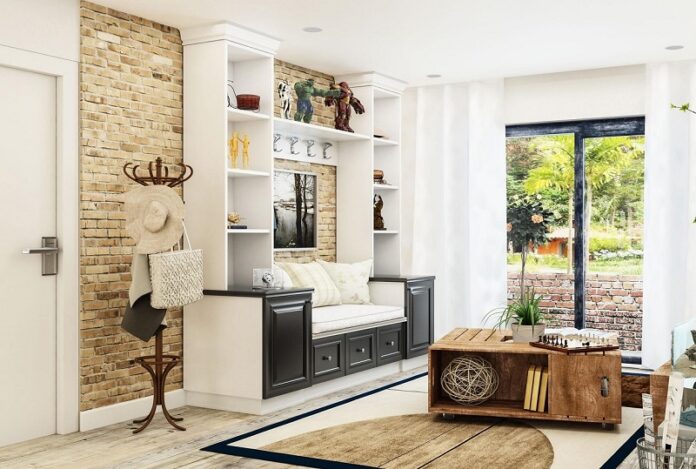Living in the city has its challenges, and space is a big one. As more people move to urban areas, finding enough room to live comfortably is getting harder. However creative solutions are making it easier to enjoy modern conveniences in smaller spaces.
Imagine a home that feels open and stylish, even with less square footage. Smart design and new technology are changing how we live, proving that small spaces can still be functional and beautiful. Plus, these innovations aren’t just good for us-they’re also better for the planet.
Let’s explore how these smart solutions can transform everyday living.
What Are Space-Saving Solutions?
Space-saving solutions are smart ways to make homes feel bigger without losing comfort or function. These ideas help reduce clutter and make the most of every inch of space. Some common strategies include:
- Multi-purpose compact furniture
- Adaptable living spaces
- Vertical storage solutions
- Custom modular designs
These solutions are becoming more important in cities where space is expensive. In places like New York, where the cost per square foot is sky-high, more people are looking for creative ways to make the most of their homes.
Why Embrace Space-Saving Solutions?
Choosing space-saving solutions has many benefits for people living in cities. First, they help the environment by cutting down on waste and using fewer resources. Cities produce a huge amount of pollution, and smaller, more efficient homes can help reduce that impact.
These designs also encourage a simpler lifestyle. With less space, people tend to keep only what they truly need, leading to a more organized and stress-free home.
Clutter can make us feel overwhelmed, so having fewer things often brings a sense of calm. In the end, a well-designed small space can create a more comfortable and peaceful way of living.
Innovative Examples of Space-Saving Solutions
Across the globe, innovative space-saving solutions are revolutionizing urban living. Here are some notable examples:
Foldable Houses
A foldable house is a new and exciting way to live in the city. These homes can change size, expanding when more space is needed and folding down when not in use.
They were first created for temporary housing, but now more people are choosing them as a long-term option. Many designs use eco-friendly materials and energy-saving features, making them both smart and sustainable.
Micro Apartments
Micro apartments are small living spaces, usually under 400 square feet. They are designed to make the most of every inch, often using foldable furniture and hidden storage.
These apartments are popular with young professionals and students who want to live in busy city areas without spending too much. With smart layouts, they offer both comfort and convenience in a compact space.
Modular Urban Designs
Modular homes are built in pieces and put together quickly on-site. This makes construction faster and more efficient compared to traditional housing.
People can also customize these homes, choosing layouts and features that fit their needs. Even though they take up less space, modular designs offer stylish and comfortable living solutions for city dwellers.
Design Principles Behind Space-Saving Solutions
Creating effective space-saving solutions relies on several design principles that prioritize functionality and efficiency. Key principles include:
Flexibility
Small spaces work best when they can serve more than one purpose. A living room can double as a workspace by using a foldable desk or hidden storage.
Furniture that changes shape or moves easily makes a home more flexible. This helps people stay organized and make the most of their space.
Verticality
Using vertical space is a great way to make the most of a small home. Wall-mounted shelves, hanging organizers, and tall storage units help keep things off the floor.
This reduces clutter and makes the room feel more open. With better organization, it’s easier to find what you need and move around comfortably.
Integrated Technology
Smart home technology makes small-space living easier and more comfortable. With automated lighting, temperature control, and voice-activated devices, managing a home takes little effort.
These features help save space by reducing the need for extra switches and bulky appliances. They also cut down on energy use, making homes more efficient and cost-effective.
Challenges in Implementing Space-Saving Solutions
While the benefits of space-saving solutions are significant, some challenges need to be addressed:
Zoning Laws
Many cities have strict rules about where and how homes can be built. These zoning laws can make it hard to create smaller or more creative living spaces.
In some areas, only traditional houses are allowed, limiting new housing options. Changing these laws takes time and depends on local government approval.
Public Perception
Some people believe a home should be large with separate rooms for different activities. They may see smaller homes as less desirable or even impractical.
Overcoming these ideas takes education about the benefits of compact living. As more people experience well-designed small spaces, opinions may start to change.
Financial Barriers
Building a space-saving home can cost a lot upfront. Special materials, smart furniture, and efficient layouts often come with higher price tags.
While these designs save money in the long run, not everyone can afford the initial cost. Finding affordable ways to build smaller homes is key to making them more accessible.
Future of Urban Living: The Role of Space-Saving Solutions
As cities grow, saving space is becoming more important than ever. Smart designs help people live comfortably in smaller areas while also being better for the planet.
Tiny apartments, foldable furniture, and hidden storage solutions make small spaces feel bigger. City planners, architects, and leaders need to focus on creating homes that use space wisely.
By making these changes, cities can provide more housing without using too many resources. This way, people can enjoy modern living without putting extra strain on the environment.
A Sustainable Future Awaits
Embracing space-saving solutions is not just about adapting to limited living quarters; it’s about rethinking the very nature of urban living. By innovating residential designs, such as foldable houses and modular apartments, we can redefine our environments and create sustainable urban spaces that meet the needs of an ever-growing population.
Now is the time to explore these transformative ideas and advocate for their implementation in our cities.
Is this article helpful? Keep reading our blog for more.





